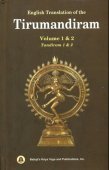Sakthi: 8 definitions
Introduction:
Sakthi means something in Hinduism, Sanskrit. If you want to know the exact meaning, history, etymology or English translation of this term then check out the descriptions on this page. Add your comment or reference to a book if you want to contribute to this summary article.
In Hinduism
Ayurveda (science of life)
Source: gurumukhi.ru: Ayurveda glossary of termsSakthi (सक्थि):—Lower limb

Āyurveda (आयुर्वेद, ayurveda) is a branch of Indian science dealing with medicine, herbalism, taxology, anatomy, surgery, alchemy and related topics. Traditional practice of Āyurveda in ancient India dates back to at least the first millenium BC. Literature is commonly written in Sanskrit using various poetic metres.
Languages of India and abroad
Sanskrit dictionary
Source: DDSA: The practical Sanskrit-English dictionarySakthi (सक्थि).—n. [sañj-kithan Uṇādi-sūtra 3.154]
1) The thigh; (changed in comp. to saktha after uttara, pūrva and mṛga or when the compound implies comparison; see P.V.4. 98); असौ चासौ च सक्थ्यौ (asau cāsau ca sakthyau) Bṛ. Up.1.2.3; सुग्रीवेशः कटी पातु सक्थिनी हनुमत्प्रभुः (sugrīveśaḥ kaṭī pātu sakthinī hanumatprabhuḥ) Rāma-rakṣā 8.
2) A thigh bone.
3) The pole or shafts of a carriage.
Source: Cologne Digital Sanskrit Dictionaries: Shabda-Sagara Sanskrit-English DictionarySakthi (सक्थि).—n. (-kthi) 1. The thigh. 2. Part of the frame of a cart. 3. A bone. In compound sakthi is changed to saktha after uttara, pūrva, mṛga, or a word denoting an object with which it is compared. E. ṣañj to unite, Unadi aff. kthin .
Source: Cologne Digital Sanskrit Dictionaries: Benfey Sanskrit-English DictionarySakthi (सक्थि).—probably sañj + than, n.; the base of some cases is sakthan, 1. The thigh. 2. A bone. 3. The frame of a cart.
Source: Cologne Digital Sanskrit Dictionaries: Cappeller Sanskrit-English DictionarySakthi (सक्थि).—[neuter] sakthī [feminine] the thigh.
Source: Cologne Digital Sanskrit Dictionaries: Monier-Williams Sanskrit-English Dictionary1) Sakthi (सक्थि):—n. (derivation doubtful; the base sakthan [fr. which [accusative] [plural] sakthāni, [Ṛg-veda v, 61, 3]] appears in later language only in the weakest cases e.g. sg. [instrumental case] sakthnā [genitive case] [ablative] sakthnas [locative case] sakthani, or sakthni cf. [Pāṇini 7-1, 75]; there occurs also [nominative case] [accusative] [dual number] sakthyau [Ṛg-veda x, 86, 16; Atharva-veda vi, 9, 1] formed [from] a fem. base sakthī), the thigh, thigh-bone
2) the pole or shafts of a cart ([dual number] euphemistically ‘the female organ’), [Ṛg-veda]; etc.
3) Sakthī (सक्थी):—[from sakthi] See under sakthi.
Source: Cologne Digital Sanskrit Dictionaries: Yates Sanskrit-English DictionarySakthi (सक्थि):—(kthiḥ) 2. n. The thigh; part of the frame of a cart.
Sanskrit, also spelled संस्कृतम् (saṃskṛtam), is an ancient language of India commonly seen as the grandmother of the Indo-European language family (even English!). Closely allied with Prakrit and Pali, Sanskrit is more exhaustive in both grammar and terms and has the most extensive collection of literature in the world, greatly surpassing its sister-languages Greek and Latin.
Kannada-English dictionary
Source: Alar: Kannada-English corpusSakthi (ಸಕ್ಥಿ):—[noun] that part of the leg in humans between the knee and the hip; the thigh.
Kannada is a Dravidian language (as opposed to the Indo-European language family) mainly spoken in the southwestern region of India.
See also (Relevant definitions)
Starts with: Cakti, Caktiman, Caktimukam, Caktipucai, Caktiyanucaram, Sakthichaaranai, Sakthicharanai, Sakthika, Sakthin.
Query error!
Full-text (+44): Sakthan, Mrigasaktha, Dirghasakthi, Duhsaktha, Avashakthika, Asaktha, Saktha, Lomashasaktha, Anjisaktha, Kshepanigrahasakthi, Duhsakthi, Aparasaktha, Lomashasakthi, Asakthi, Stabdhasakthi, Stabdhasakthita, Susakthi, Sashki, Cakti, Utsaktha.
Relevant text
Search found 18 books and stories containing Sakthi, Sakthī; (plurals include: Sakthis, Sakthīs). You can also click to the full overview containing English textual excerpts. Below are direct links for the most relevant articles:
International Ayurvedic Medical Journal
Analysis of aaharasakthi as one among dasavidha pareeksha < [2015, Issue XI November]
Comprehensive study of adhoshakhagata urvi marma < [2018, Issue XI, November]
An interventional study to assess the effect of nadishudhi pranayama in pulmonary functions of overweight individuals < [2017, Issue IX, September]
World Journal of Pharmaceutical Research
Anti-histaminic effects of Gandhaga Chunnam in animal model < [2014: Volume 3, November issue 9]
Evaluate the potency of “peru marunthugal” in the treatment of cancer < [2020: Volume 9, January issue 1]
Study on madhutailika vs. gudatailika vasthi for sciatica. < [2023: Volume 12, December special issue 22]
Rig Veda (translation and commentary) (by H. H. Wilson)
Study of charkokta angula pramana of shadanga and it’s impact on physical health < [Volume 8, Issue 2: March - April 2021]
Ayurvedic Management of Anxiolytic Withdrawal Disorder - A Case Report < [Volume 10, Issue 3: May-June 2023]
Ayurvedic Management of Schizophreniform Disorder < [Volume 11, Issue 1: January-February 2024]
The sri chakra as a symbol of the human body < [Volume 12 (issue 3-4), Jan-Jun 1993]
The need to publish well-edited tamil medical texts < [Volume 14 (issue 3), Jan-Mar 1995]
Pranayama and brain correlates < [Volume 11 (issue 1-2), Jul-Dec 1991]
Marma-sastra and Ayurveda (study) (by C. Suresh Kumar)
Adangal (techniques to relieve injured Marmas/Varmas) < [Part 1 - Introduction]
Introduction to Marma < [Part 1 - Introduction]
Classification of Marmas (Introduction) < [Part 1 - Introduction]
Related products
